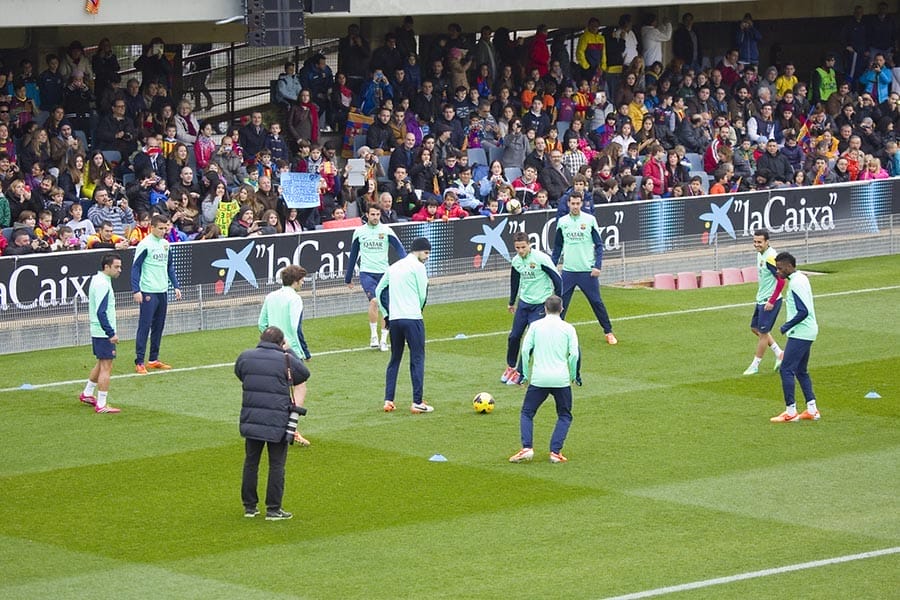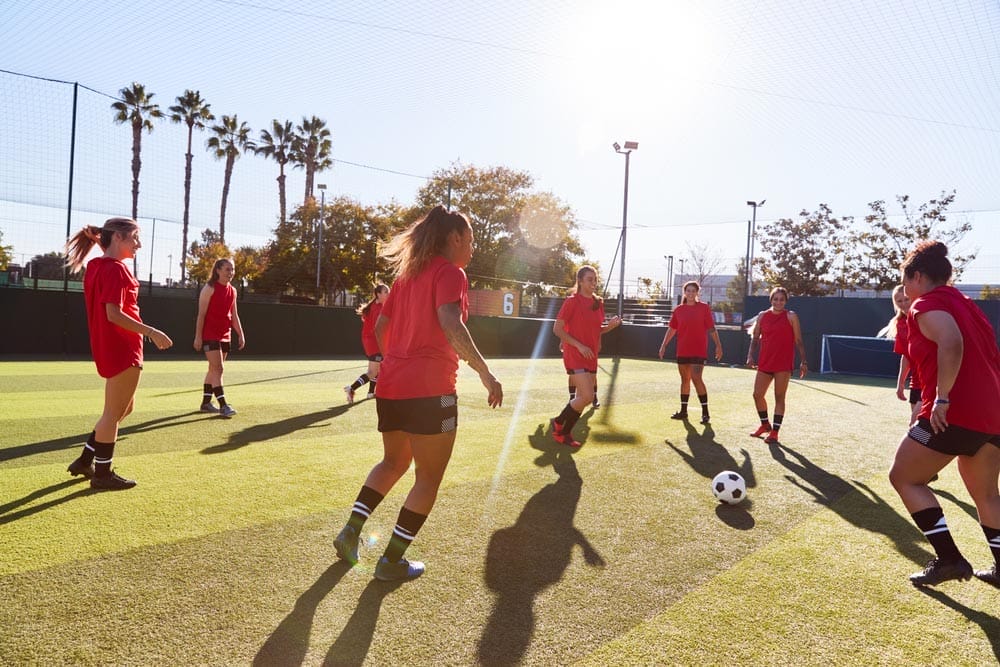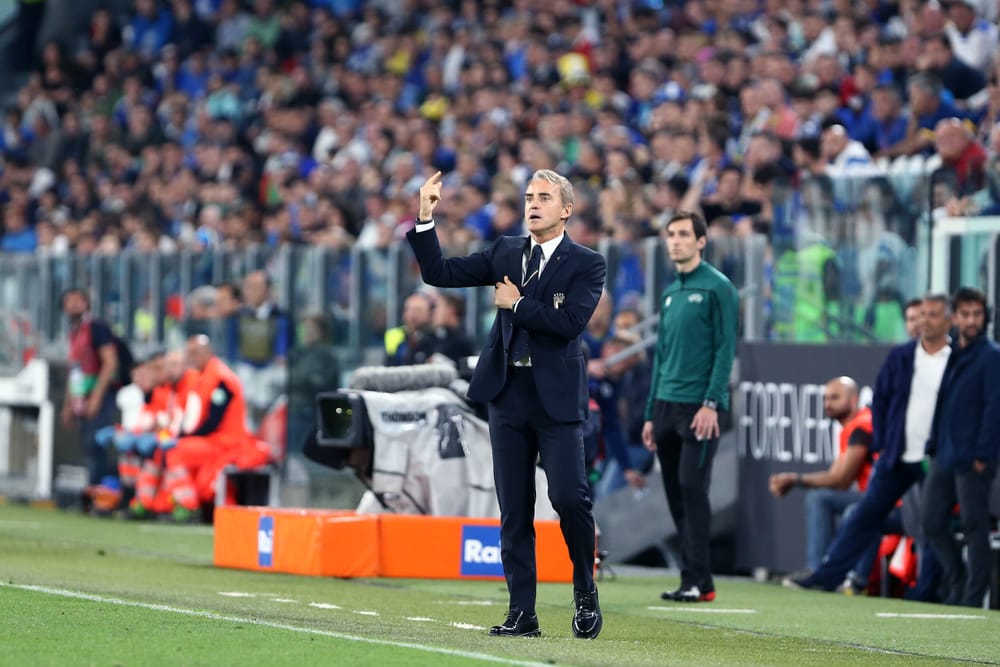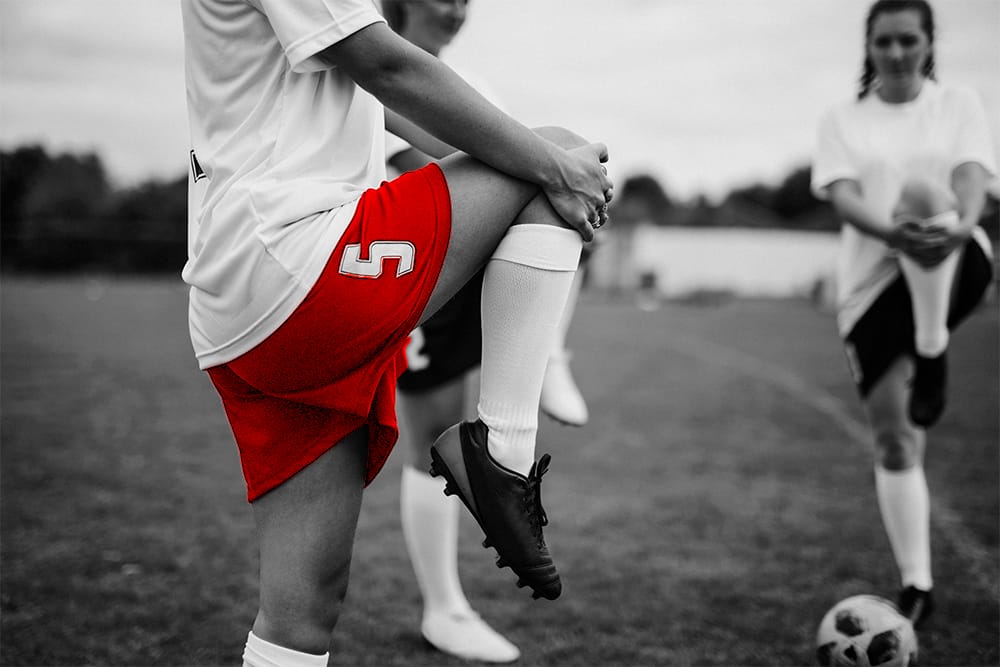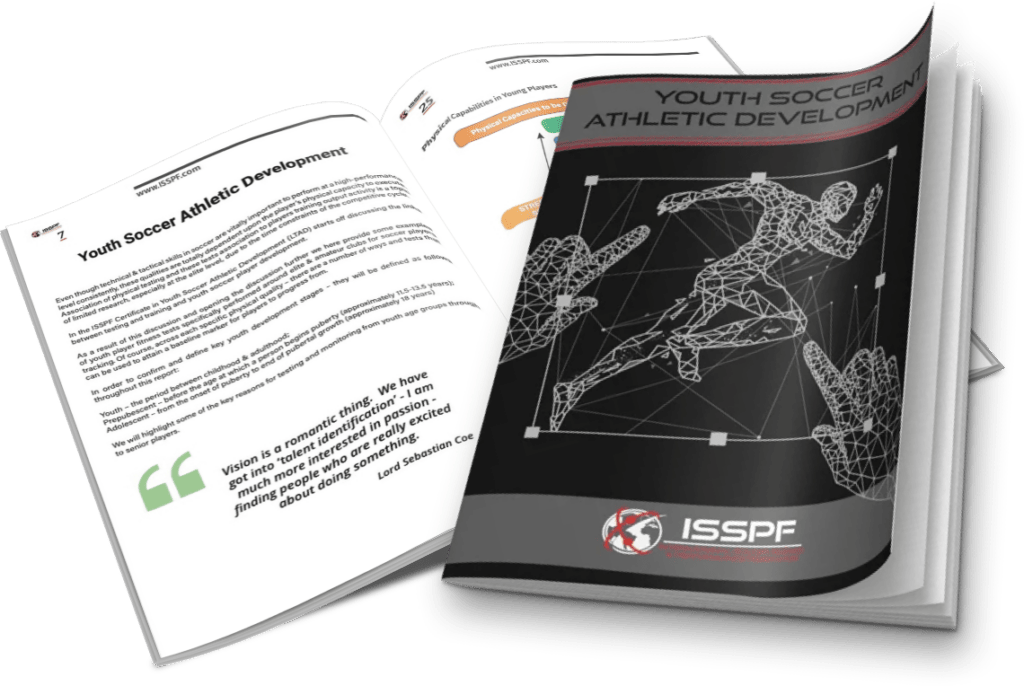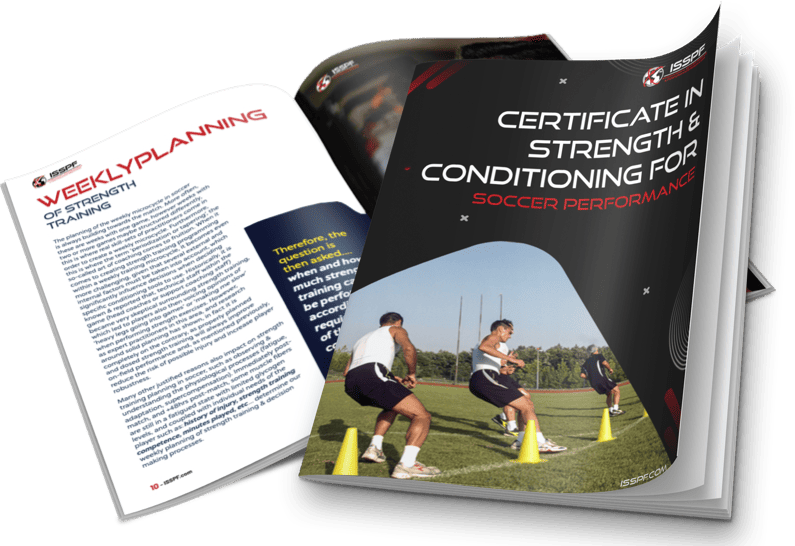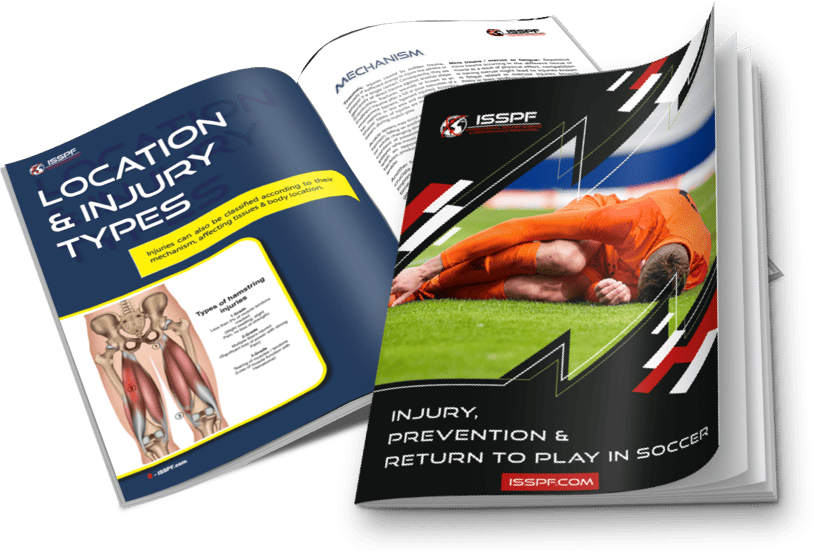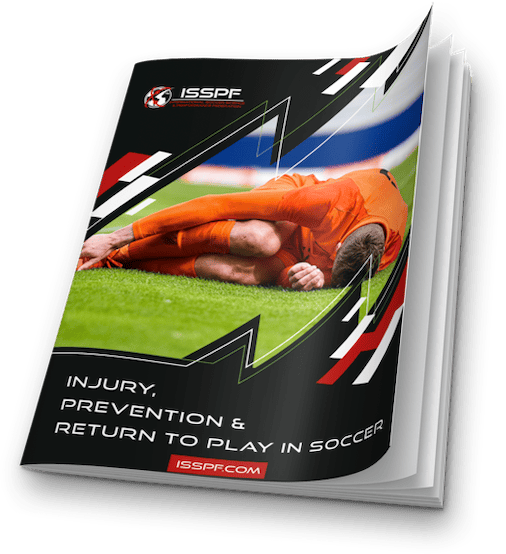Author: Philip Cauchi (UEFA A & Elite Youth Coach)
Through the recent evolution of tactical scenarios within the game combined with deeper analysis of playing systems and strategies, the longitudinal link between success & possession based coaching styles have further highlighted the methodology aspects of the game.
Synonymous with possession-based strategies, coaches such as Pep Guardiola, Mikel Arteta & Xavi Hernandez have not only grown up playing & being educated with a ‘possession-based philosophy of play’, but also talk of dominating the ball as a way of reducing opponents goalscoring opportunities combined with creating more chances to build the play and expose weaknesses.
In order to evolve this type of playing philosophy or style, then player must be exposed on a daily basis to the small-sided, reduced space training drills or sequences that require explosive movements, quick reactional passing options & understanding where the next pass should be.
In order to achieve these key footballing or soccer developmental skills, many coaches around the world express or highlight their use of ‘RONDOS’. The ‘Rondo’ is a very popular football or soccer training tool used all over the world.
In most cases, these drills do not require much equipment, if any except for a ball, and are very easy to understand, manipulate and organise.
The term ‘Rondo’ – meaning round in Catalan, describes the organisation of the players in the exercise.
Physical Training & Soccer Methodology Course
The rondo is a fun and easy-to-apply exercise that can be adapted across different levels of abilities and ages.
A position game is an extension of the rondo played on a larger scale, and where positional reference within more game realism exists. In this article, we will explore their uses and benefits in relation to the development of soccer players.
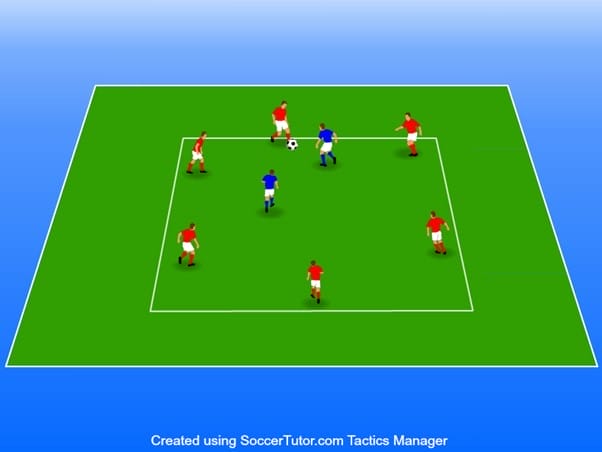
Due to the high number of ball touches, the rondo is a very useful tool in developing technique. Players at the younger ages (complemented with a well-planned and executed coaching methodology) will learn to self-adjust their position in order to receive the ball in an optimum condition which ensures good ball circulation.
The players must continuously scan the pitch to anticipate what the best option to play is. Thus, making the rondo the ideal exercise for players to develop their confidence to play the ball under pressure.
We should however keep in mind that analytical practices focusing on passing and receiving should not be totally abolished. This kind of practice compliment rondos in the development of technical composure.
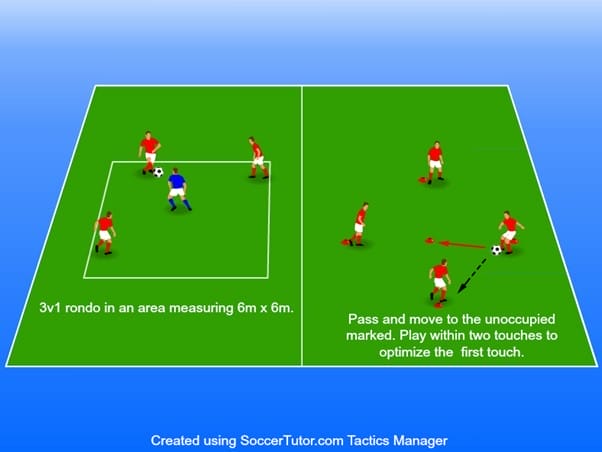
What is a Rondo?
A rondo is a type of small-sided training game, used as a function of training drill amongst coaches for football or soccer.
During a typical rondo, one team is tasked with maintaining possession of the ball while completing a series of passes to perform a specific outcome based on the training focus, whilst the opposition team, or smaller group of players attempts to regain possession – following a set of rules applied by the coaching staff.
Through rondos, we can work on optimizing techniques in a richer environment, where there is more transference to the game. Specific components to be optimized can be identified during the planning stages.
The optimization of a specific component or capacity could be achieved by manipulating the environment which includes the area of practice, and the number of players participating in the exercise (attackers and defenders).
The main aim of a rondo is to secure possession of the ball. As such passing and receiving are the two main technical capacities to be optimized.
Touch restriction, where the players are allowed a maximum number of touches on the ball may also be incorporated into the exercise with the aim of developing the players’ first touch and playing the ball to the correct foot of the teammate and with the correct speed.
The characteristics of a football action may be well simulated in a rondo as the players learn to be in the right position to provide support and receive the ball, with the correct direction and speed.
With regards to technical intensity (the number of passes and receptions in unit of time, normally one minute), this can be adjusted by decreasing or increasing the area of practice, or increasing the number of opponents (defenders).
A smaller area demands the players to attend to the correct stimuli and make good and fast decisions. The players are continuously required to adjust their position well in order to have the correct angle to receive and play the ball with great accuracy and pace.
Players who possess a lower level of technique will need a bigger area and may also need to reduce the number of players involved. As an example, instead of playing a single 9v3 rondo, we can have two 4v2 rondos played in areas which allows the players to keep possession of the ball for an ideal amount of time.
By playing specific rondo formats we will also work on the basic tactical concepts.
These concepts simulate actions and communications that occur between players in a match. We must however point out that rondos are not usually played within a context.
This means that the aim is to circulate the ball without any reference to specific positions within a formation. It is through position games that the ball is circulated between the players within the positional reference and in more realistic distances and angles between them.
Furthermore, a position game has a higher degree of freedom where the players are allowed to move around more freely than in a rondo. Both through rondos and position games the basic concepts or receiving using an open body stance, face the game (pressure), break lines, etc. can be developed.
More complex concepts such as the third-man play, play between the lines, overload-to-isolate, etc. can be developed through position games.

Empathy should be nourished in the players from early ages. They need to identify the need to play passes that they would themselves like to receive if they were in the same situation as the receiver.
This will encourage a more fluid play later on when playing competitive soccer. It is also very important that we describe the different types of passes (Davies, 2016).
Basically, we have three kinds of passes: the first line of pass, the second line of pass, and the third line of pass.
When playing a pass in the first line, the ball moves to a different angle but remains in front of the defender.
The second line of pass is when the ball is played laterally and in line with the first defender with the intention of playing around the pressure.
The third line of the pass is when the ball is played behind line of pressure. This is what is normally known as a through pass (when playing behind the back line) or a progression pass (when played between the lines).
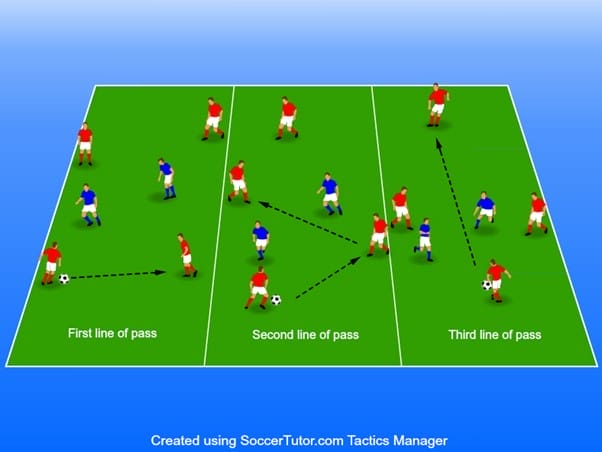
Apart from the technical and tactical aspects, rondos and position games may also be used as tools to elicit positive physiological responses.
Using rondos we can develop accelerations, decelerations and changes of direction which require a high degree of neuro-muscular control and coordination.
Thereby educating the nervous system to establish better synergy between different muscles. Making a rondo competitive between two teams is a way of increasing the load especially on the players whose intention is to recover the ball. In figure 5 one of the two teams is divided into two sub-teams and positioned in their designated areas.
Their aim is to keep possession of the ball. The defending team sends two players at a time to recover the ball and score in the small goals. After they recover the ball, irrespective if they score or not, the two defenders move to the adjacent area with the same intention.
Afterwards, they sprint back to tag their two teammates next in line to take their turn. The targeted physical component using this rondo is reactive strength with horizontal and lateral vectors to change direction rapidly.
If the area of play was larger and the two defenders had to repeatedly sprint in order to apply pressure, then we would be targeting repeated sprinting ability and also lactate tolerance.

Depending on the physical target we must adjust the size of the area, the number of attackers and defenders, the number of areas, the duration of each repetition, the duration of the rest period between bouts, the total number of repetitions and the total number of sets.
This was just a brief description of how the rondo can be applied in practice and what capacities we want to target.
How a rondo is adapted and progressed is limited to the imagination of the coach. What is very important however is to always let the players experiment, and themselves identify what capacities (tactical, technical, physical, mental, etc.) they are developing through the exercise.
Remember let them have fun and enjoy themselves! When the players are working and enjoying themselves at the same time there is a higher likelihood of learning and retention which is then transferred to the game.
References.
Davies J. C. (2016). The Philosophy of football: In shadows of Marcelo Bielsa. London: Rocketbird.
What Next?
The bespoke courses developed by ISSPF Faculty members are a way of further exposing sport science students, coaching individuals working within the game & other soccer science & performance coaching enthusiasts with a thirst to develop further.
The link below will take you to the hugely popular & expertly designed ISSPF University endorsed, quality assured & accredited Physical Training & Soccer Methodology online sport science course. This course has been described as one of the best online courses for further developing & adding to football coaching qualifications, where you will be exposed to football coaching research and practical examples used within the game by high level professionals.
Physical Training & Soccer Methodology Course
Why Is This Course Important?
- Provides most efficient training methods and detailed insights into developing player fitness alongside tactical strategies & developing a training methodology.
- Gain a better understanding how to maximise development & preparation of players in a more efficient & contemporary game model approach.
- Learn how to balance key training elements from a technical, tactical & physical preparation in order to attain peak performance.
- Practitioners & coaches can only benefit themselves & their players further by a more in-depth knowledge of physical training & soccer methodology.
- Help maximise your decision-making through a better understanding & appreciation of tapering & soccer periodisation.
Who Is This Course For?
- Coaches, trainers, and other serious individuals tasked with the responsibility for the training, preparation, rehabilitation & coaching aspects of both individual athletes or team sports.
- Individuals with an interest in developing knowledge in the preparation, training & development of footballers or soccer players.
Physical Training & Soccer Methodology Course
What Does This Course Cover?
Outline of the Physical Training & Soccer Methodology course:
Module 1: The appliance of science – tapering & periodisation in team sports
Lecturer: Dr. Adam Owen
Module 2: Soccer specific monitoring: Weekly microcycle, planning and performance
Lecturer: Dr. Dawid Golinski
Module 3: Game model building & development: Reinterpreting Tactical Periodisation
Lecturer: Dr. Alejandro Romero-Caballero (La Liga)
Module 4: Individualised Periodization in a Soccer Team: A working model
Lecturer: Jarred Marsh
Module 5: An integrated approach to soccer training: Developing a working model
Lecturer: Efthymios Kyprianou
Module 6: Carbohydrate requirements of soccer players: Implications for periodisation
Lecturer: Dr. Liam Anderson
Module 7: Integrating Physical & Tactical Periodisation in Soccer: Senior & Youth levels
Lecturer: Hamish Munro
Module 8: Maximal intensity conditioning periods in soccer: Physical vs. Tactical strategies
Lecturer: Dr. Miguel Angel Campos Vazquez (La Liga)
Module 9: Preparing the modern soccer player: Training session design
Lecturer: Dr. Adam Owen
Module 10: Competitive soccer training microcycle: Structure & justification
Lecturer: Dr. Manuel Segovia
Share this article:

